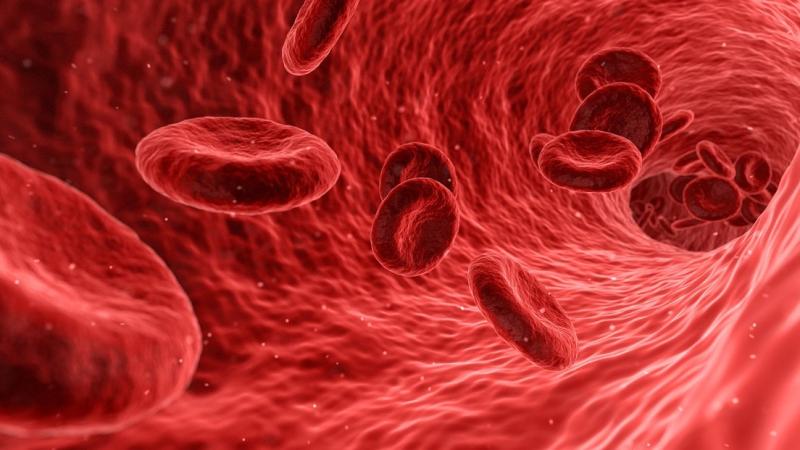
Since a decade, vitamin D, a fat-soluble vitamin, has attracted much attention from scientists and doctors. Studies have found that a lack of vitamin D is responsible for many diseases apart from rickets in children, and osteomalacia or softening of bones, in adults. Scientists now say that bone pain, muscle weakness, obesity, increased blood pressure, depression, diabetes, dementia, cancer, schizophrenia and heart diseases are all associated with the lack of vitamin D.
In a new study, published in the journal Scientific Reports, a team of researchers have found a link between insufficient vitamin D and coronary artery diseases in people having type 2 diabetes mellitus. Coronary artery diseases affect the blood vessels in our body where cholesterol-containing plaque deposit on the walls of the blood vessel and restrict the flow, causing inflammation of the arteries. A complete blockage can lead to chest pain (angina) or a heart attack. The current study involved researchers from the Translational Health Science and Technology Institute (THSTI), Faridabad and the Indian Institute of Chemical Technology (CSIR- IICT), Hyderabad.
Vitamin D comes in two forms—ergocalciferol (D2) and cholecalciferol (D3). Our body synthesises D2 from vegetable sources and D3 is produced by our skin when exposed to UV radiation or can be obtained from fish supplements. Our body then converts the two forms into ‘active metabolites’, which perform essential biological functions in different organs. They also help in the release of vital hormones like insulin by pancreatic cells.
In the current study, the researchers analysed 187 blood samples from human test subjects and divided them into four groups. The first group included those who did not have any history of diabetes or coronary heart diseases. The second group had individuals with a history of type 2 diabetes without other complications. The third group included those with coronary artery diseases, and the fourth group had subjects with coronary heart diseases with a history of type 2 diabetes. The researchers measured the levels of six vitamin D metabolites using liquid chromatography-mass spectrometry (LC-MS).
LC-MS is a technique in analytical chemistry separates mixtures with multiple components and structurally analyses each of these components and identifies them.
“One of the best methods to measure vitamin D levels in the blood is the LC-MS-based method where you can measure more precisely and accurately without interfering with other similar metabolites”, remarks Dr Sanjay K. Banerjee from TSHTI, who is a lead author of the study.
India has a long history of vitamin D deficiency as about 70-80% of the population suffers from it. The increased awareness about the importance of vitamin D has led to a trend of checking its levels in the body. Since vitamin D is found in many forms in our body, we are yet to figure out which of these are responsible for various diseases. In clinical practice, e 25-hydroxy D is measured as vitamin D status. Most of the available test procedures often cannot identify all metabolites of vitamin D accurately, resulting in false readings and inaccurate predictions of diseases.
“In our study, we used the LC-MS-based method to identify different vitamin D metabolites that produced inside of our body via liver and kidney. We measured the active form of vitamin D (1,25 dihydroxy vitamin D) which is more important to know. In general, most diagnostic laboratories measured the inactive form of vitamin D (25-hydroxyvitamin D) which needs to convert to an active form after modification in the kidney”, explains Dr R. Srinivas from CSIR-IICT, who is also a lead author of the study.
The researchers found that the levels of all vitamin D metabolites in the fourth group of samples were the lowest compared to the other groups. They performed statistical analysis to predict the incidence of diabetes among individuals with low vitamin D, after considering other factors like age, sex, smoking history, alcoholic history and family history of diabetes. They concluded that individuals with lower levels of 25-hydroxyvitamin D, one of the metabolites, have a risk of developing type 2 diabetes, while those with low levels of 1,25-dihydroxy vitamin D (1,25(OH)D), face a chance of being affected by coronary artery diseases if they have diabetes.
The study is one of the first to associate deficiency of metabolites of vitamin D with diabetes and coronary artery diseases in Indian patients. The findings can help in assessing the risk of developing these diseases in individuals with insufficient vitamin D. The authors acknowledge that their dataset is small and was collected from a single place, which can be a limitation.
“We need to get data from different parts of the country which will help to generalise the conclusion. Similarly, we need one long-term vitamin D supplementation study where we can find the percentage of population move to diabetes and its complication in the presence of sufficient vitamin D levels in their blood”, say Dr Srinivas and Dr Banerjee.





